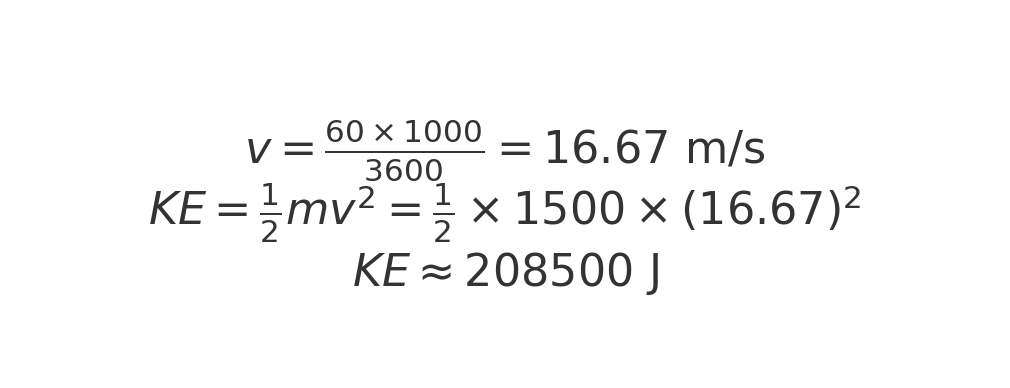Looking for Work and Energy NCERT Solutions for Class 9? You’ve come to the right place! In this blog, you’ll find all the exercise questions from Chapter 10 – Work and Energy, along with simple, student-friendly answers. Whether you’re preparing for exams or just revising, these NCERT solutions will help you score better and understand the chapter easily.
📌 Work and Energy NCERT Solutions with Answers
Q1. Look at the activities listed below. Reason out whether or not work is done.
(a) Suma is swimming in a pond.
✅ Yes, work is done. She applies force to push water and moves forward, causing displacement.
(b) A donkey is carrying a load on its back.
❌ No work is done (scientifically), as the load is not displaced in the direction of the donkey’s force.
(c) A windmill is lifting water from a well.
✅ Yes, work is done by the windmill as water is moved upward.
(d) A green plant is carrying out photosynthesis.
❌ No (in terms of mechanical work), as there’s no displacement due to applied force.
(e) An engine is pulling a train.
✅ Yes, it exerts force and the train is displaced.
(f) Food grains are drying in the sun.
❌ No, no force is applied for displacement.
(g) A sailboat moves due to wind energy.
✅ Yes, wind applies force and the boat is displaced.
Q2. An object thrown at an angle moves in a curved path. What is the work done by gravity?
✅ The work done by gravity is zero overall, as gravity pulls downward while the displacement is along a curved path that starts and ends on the same horizontal level. There’s no net vertical displacement.
Q3. A battery lights a bulb. Describe energy changes.
✅ Chemical energy in the battery is converted to electrical energy, which then turns into light and heat energy in the bulb.
Q4. A 20 kg mass changes velocity from 5 m/s to 2 m/s. Calculate work done.
Initial KE=12×20×52=250J
Final KE=12×20×22=40J
Work done=FinalKE−InitialKE=40−250=−210J
✅ Work done is -210 J (negative sign means force is opposite to motion).
Q5. Mass is moved horizontally from point A to B. What is the work done by gravity?
✅ Zero. Since the object is moved horizontally, there is no vertical displacement. Gravity does no work.
Q6. A falling object loses potential energy. Is energy conserved?
✅ Yes. Potential energy decreases, but it converts into kinetic energy. Total energy remains the same.
Q7. What energy transformations happen when riding a bicycle?
✅ Muscular energy (chemical) is converted to mechanical energy. Some of it becomes heat due to friction.
Q8. You try to push a huge rock but it doesn’t move. Is energy transferred?
✅ No work is done on the rock, but your body uses energy, which is lost as heat in your muscles.
Q9. A household consumes 250 units of energy in a month. How much in joules?
1 unit = 1 kWh = 3.6 × 10⁶ J
250×3.6×106=9×108J250×3.6×106=9×108J
✅ Total energy = 9 × 10⁸ joules
Q10. A 40 kg object is raised to 5 m. Find PE. What is KE halfway down?
PE=mgh=40×10×5=2000J
Athalfway(2.5m),PE=40×10×2.5=1000J
SoKE=2000−1000=1000J
✅ Kinetic energy halfway = 1000 J
Q11. What is the work done by gravity on a satellite in orbit?
✅ Zero. The satellite moves in a circular path. Gravity acts perpendicular to motion, so no work is done.
Q12. Can there be displacement without a force?
✅ No. Newton’s laws say motion (displacement) changes only with a force.
Q13. A person holds a bundle for 30 minutes. Work done?
✅ No (in physics). Even though the person gets tired, there’s no displacement, so no work is done.
Q14. A 1500 W heater is used for 10 hours. Find energy used.
E=P×t=1500W×10h=1500×3600×10=54,00,000J
✅ Energy = 5.4 × 10⁶ joules or 5.4 MJ
Q15. Explain law of conservation with a pendulum.
When pulled to one side, it has max potential energy. As it swings, PE converts to KE and back. It eventually stops due to air resistance, which converts energy to heat, but total energy is conserved.
Q16. How much work to stop a moving object?
Work needed = Its kinetic energy
W=1/2mv2W=21mv2
Q17. Work required to stop a 1500 kg car at 60 km/h.

✅ Work = ~2.08 × 10⁵ joules
Q18. Direction of force vs displacement: Positive, Negative, or Zero Work?
Observe arrows:
- Same direction = Positive
- Opposite = Negative
- Perpendicular = Zero
✅ Use diagram to decide.
Q19. Soni says acceleration can be zero with many forces. Is she right?
✅ Yes. When forces cancel each other, the object has zero net force and no acceleration.
Q20. Four 500 W devices run for 10 hours. How much energy used?
TotalPower=500×4=2000W
Time=10h→36000s
E=2000×36000=72,00,000J=7.2MJ
✅ Energy = 7.2 × 10⁶ J
Q21. A falling object stops on ground. What happens to KE?
✅ It is converted into heat, sound, or deformation energy (like denting the ground). Energy is not lost, just changed.
Use them to revise before tests, practice writing answers, and improve your marks!
See more:
Work and Energy Class 9 Notes – Easy Explanation with Formulas
NCERT Science Class 9 for other Science chapters
